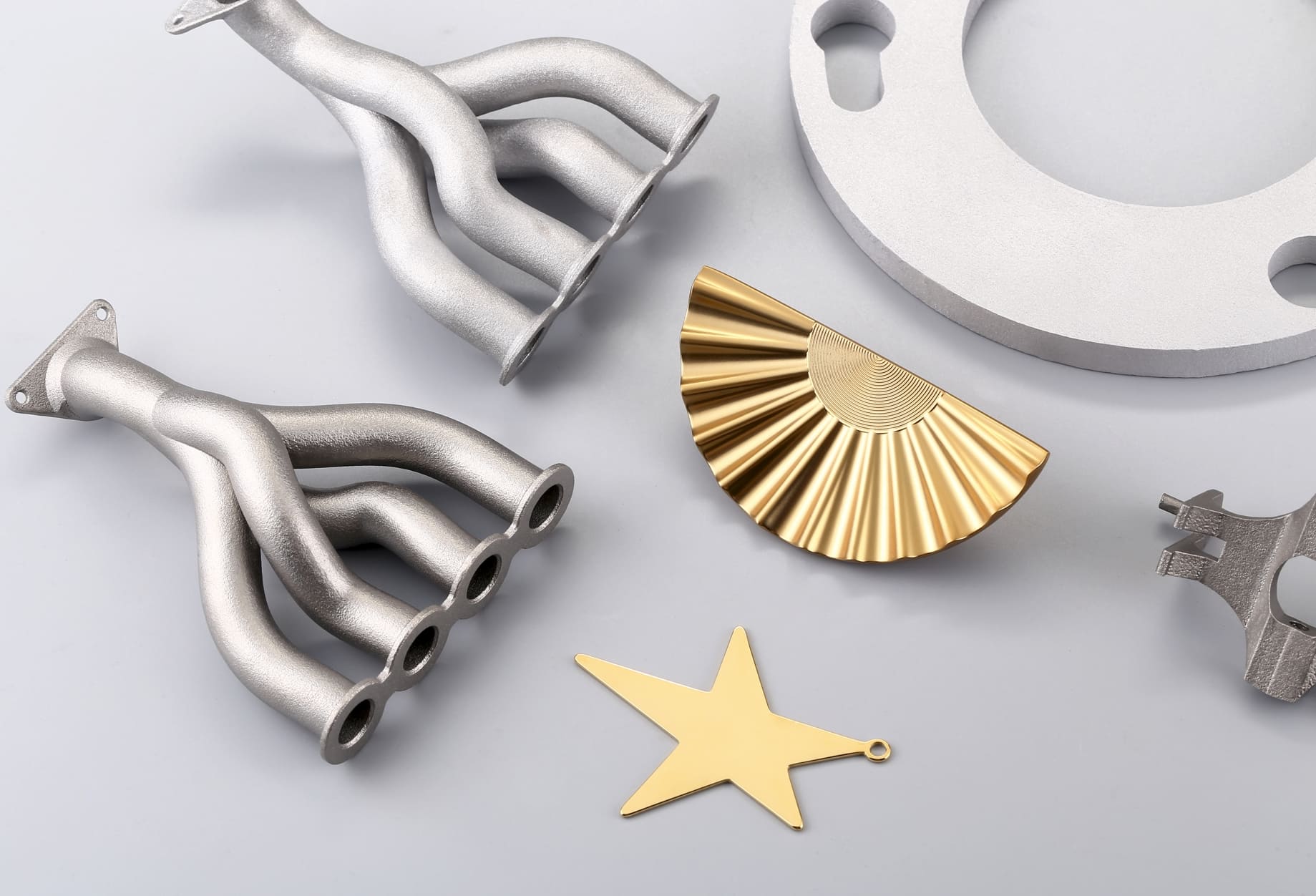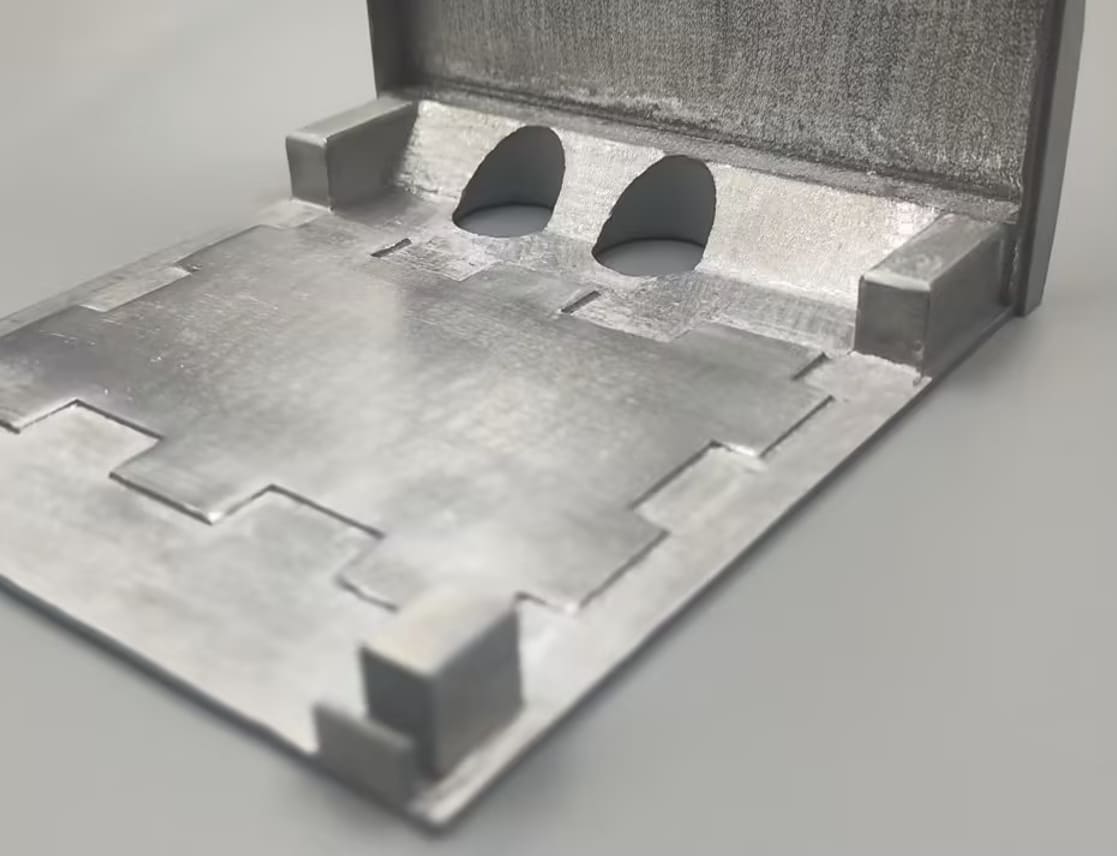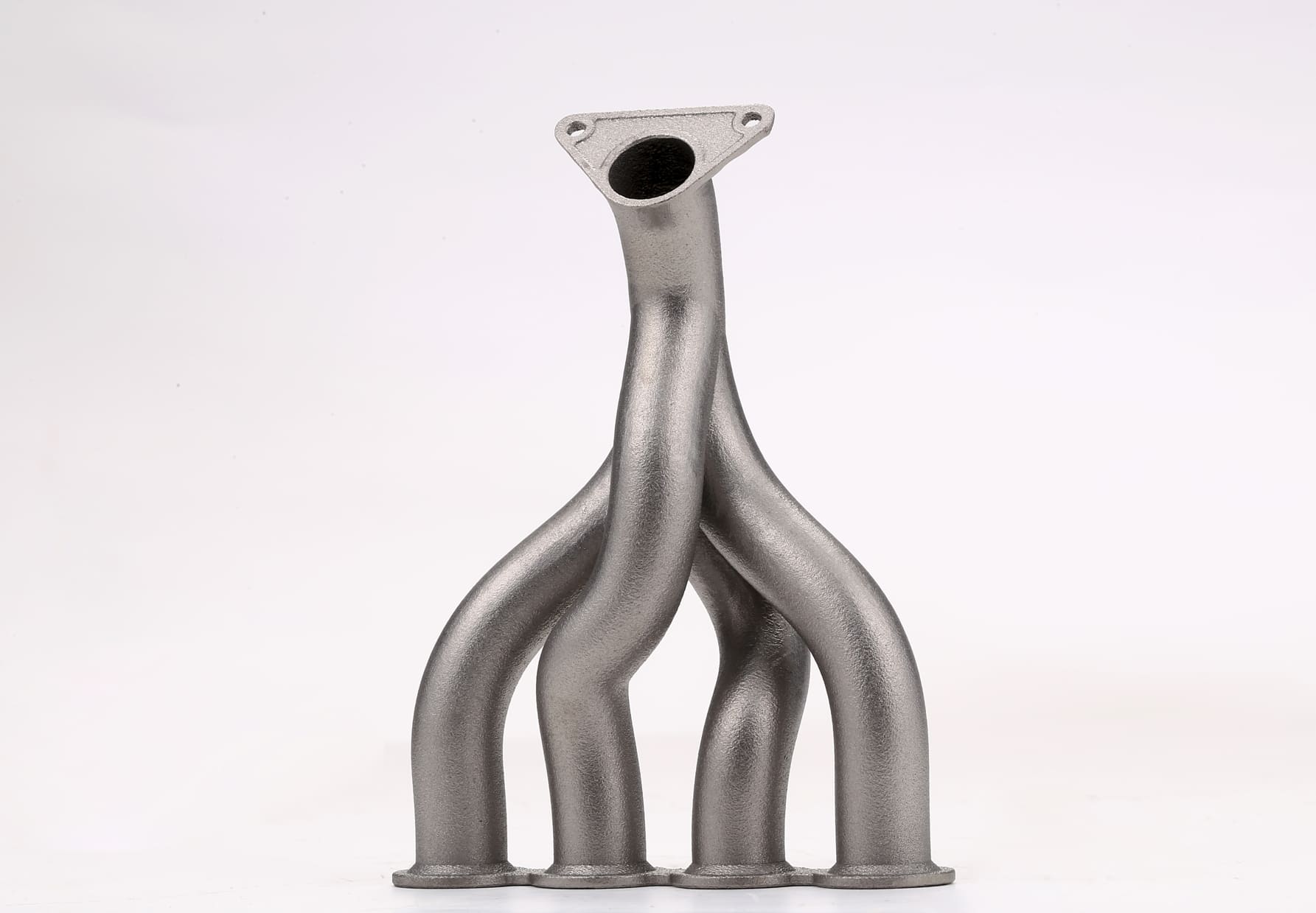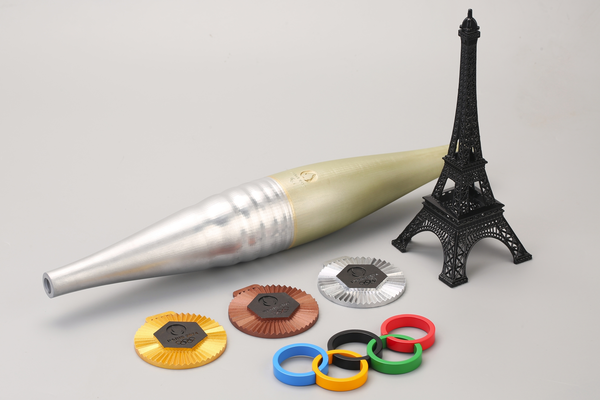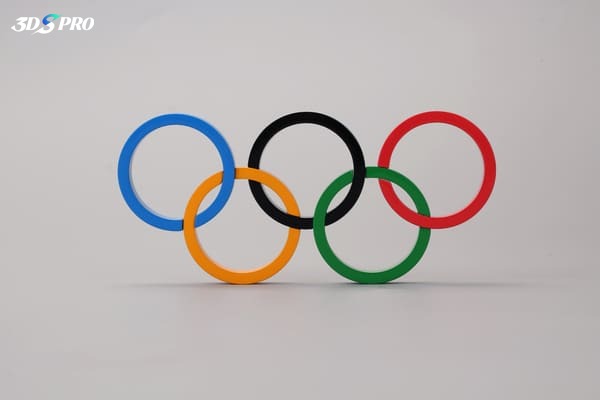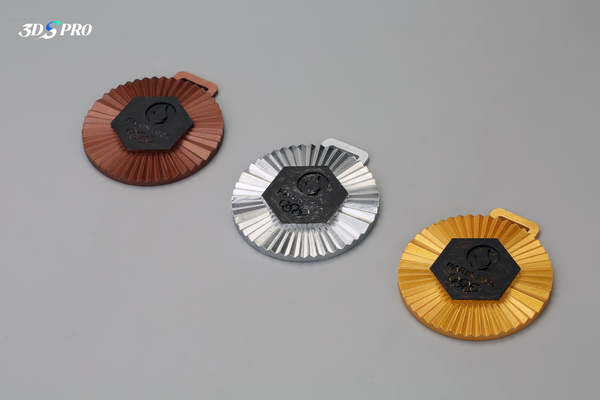A Metal 3D Printed Eiffel Tower
● Process: Selective Laser Melting (SLM)
● Material: Aluminum AlSi10Mg
● Post-processing: Black Zinc Plating
The Eiffel Tower is one of Paris's signature landmarks, so why not create a replica for the Paris 2024 Olympics? With 3D printing's capabilities, we can produce intricate lattice structures in a single piece. The Eiffel Tower is a perfect example of how detailed lattice structures can be created with 3D printing! The 3D printed Eiffel Tower was made using metal 3D printing technology, specifically Selective Laser Melting (SLM), using aluminum as the material. After printing, the tower is beautifully post-processed with black zinc plating. The 3D printed model of the Eiffel Tower is 5.9 inches (15cm) tall.
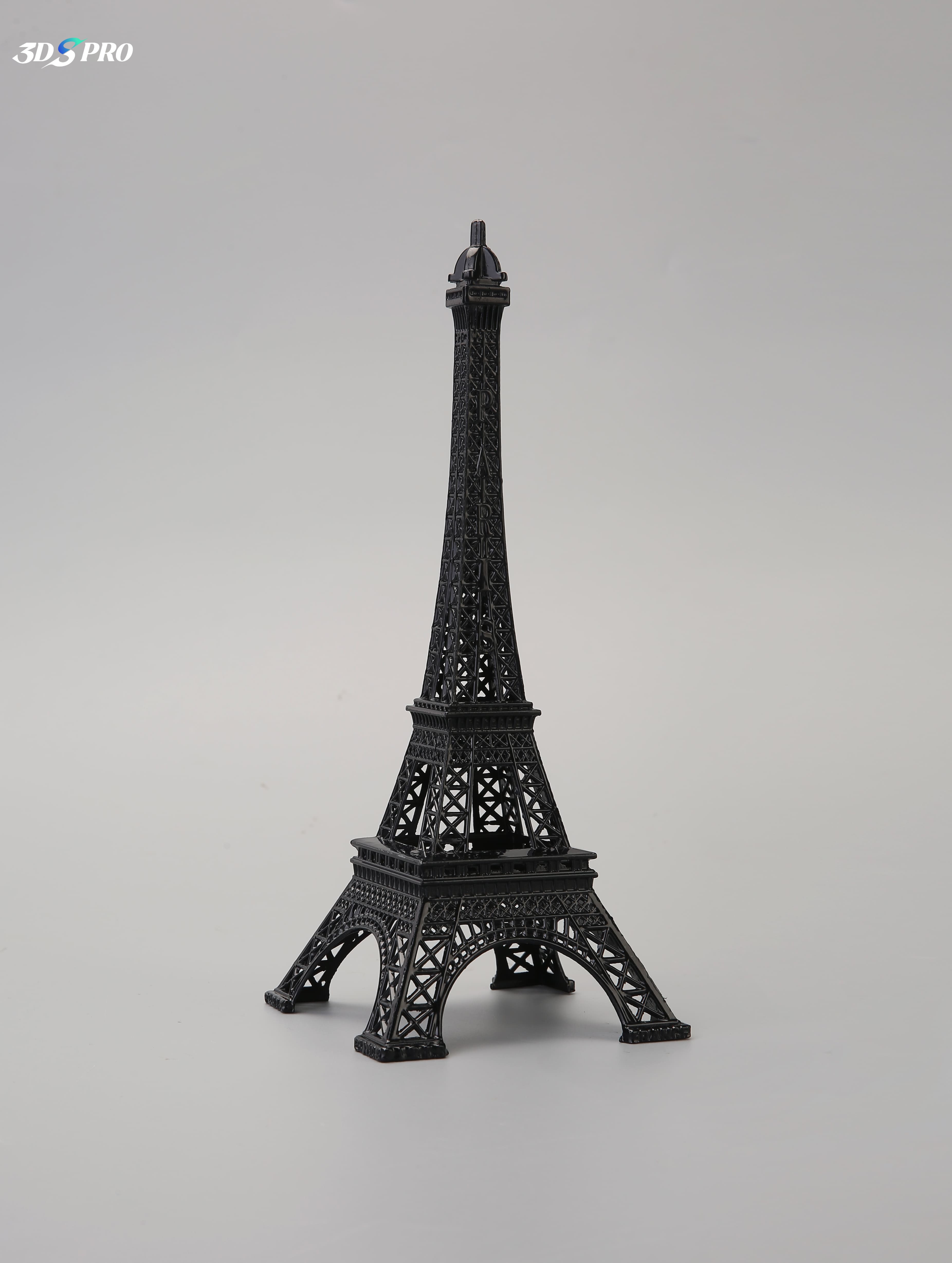
Why did we choose a less common method to create the Eiffel Tower?
We’ve evaluated the printability of SLA, SLS, MJF, and SLM 3D printing.
SLA 3D Printing?
When considering SLA 3D printing for the Eiffel Tower, we encountered two major issues. First, the intricate details of the Tower are too small to print effectively. Second, even if we could print these details with supports, removing the supports would likely damage the structure because the resin would not be strong enough to withstand impact. Therefore, we decided against using SLA.
SLS or MJF?
The key problem with SLA is the need for supports. But what if we used 3D printing techniques that don’t require support structures? SLS or MJF could be viable options! However, our engineer pointed out that it would be extremely difficult to clear the residual powders from the Tower, and the lattice structures wouldn’t be fully showcased.
Take a Shot at SLM
If we don't increase the size of the Eiffel Tower, then SLM is the only option left within 3DSPRO's capabilities. Our engineer experimented with modified the 3D designs, leading us to take a shot at metal 3D printing. While metal materials are strong and durable enough for post-processing.
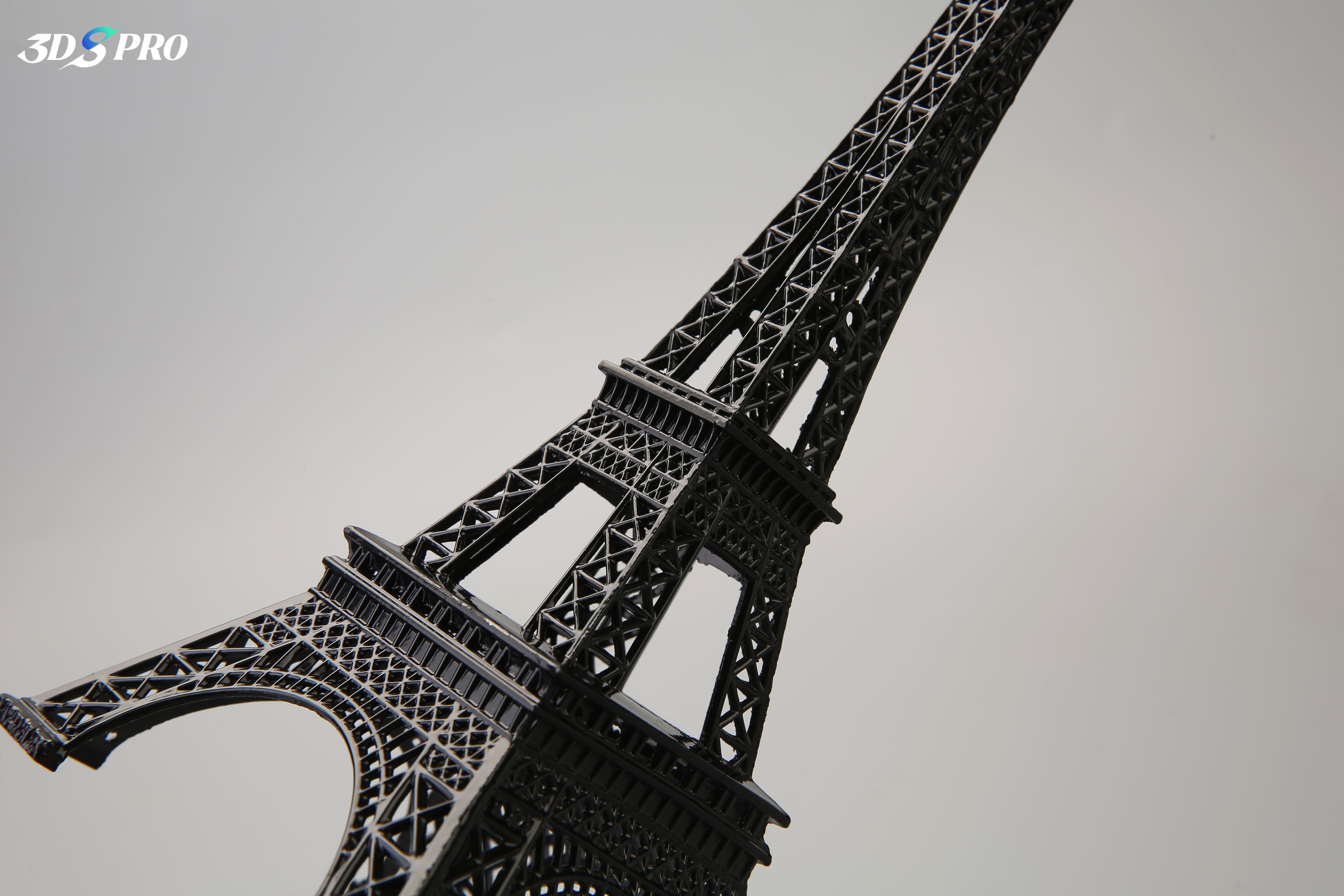
Little Things That We Considered
As you can see, the Eiffel Tower has three floors, which is also a significant challenge when deciding on the 3D printing technique. These floors are quite fragile and prone to breaking. To print it successfully, our engineer suggested removing the platforms inside the Tower and creating a hollow structure. By the way, even with the platforms removed, the lattice structures still required numerous supports to prevent warping, and it remained difficult to clear the residual powder from the spaces between each grid.
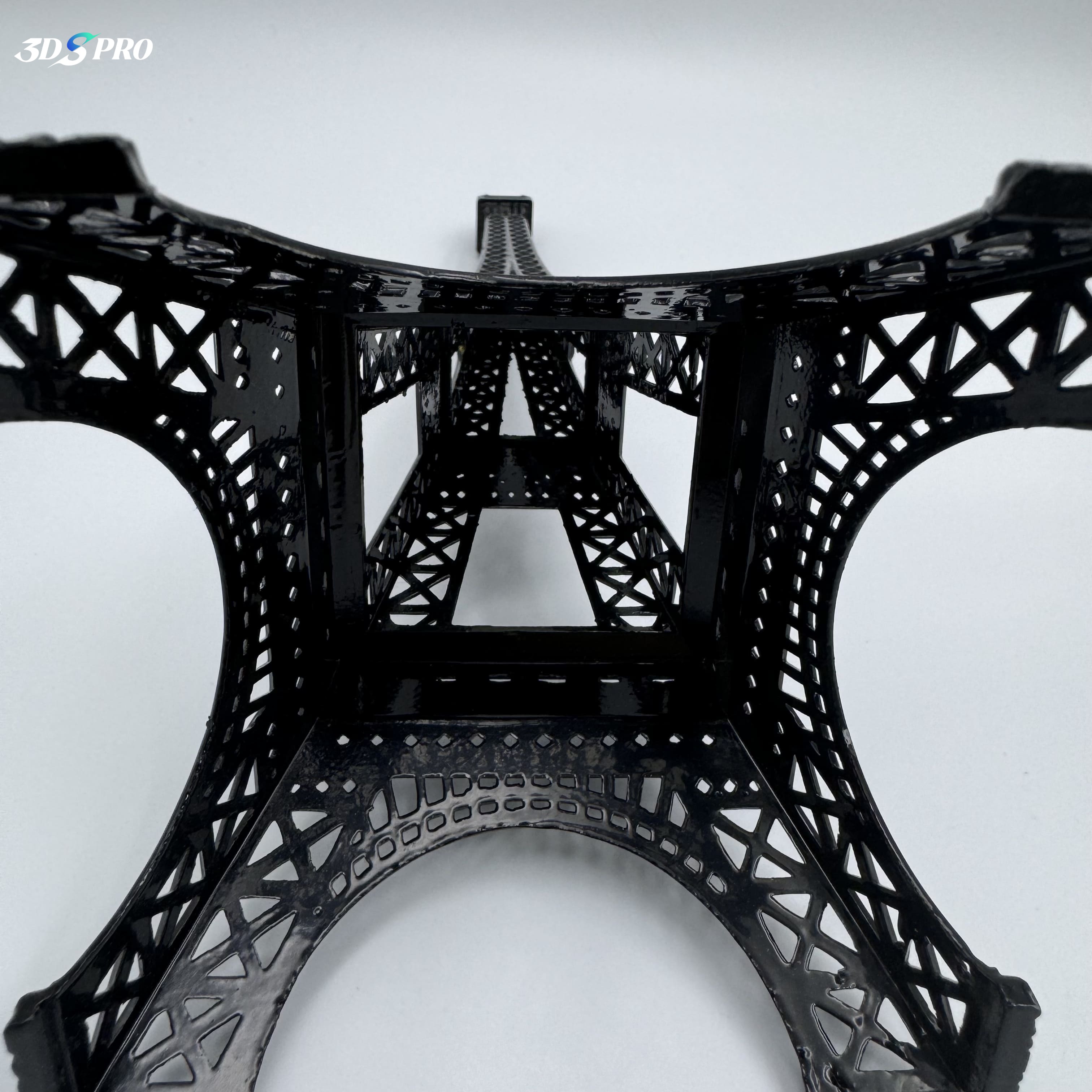
Additionally, to test the capabilities of SLM 3D printing, we embossed “Paris” on the front of the Tower and “France” and “Paris” at the bottom, with a height of 1.0mm. These details were printed successfully.
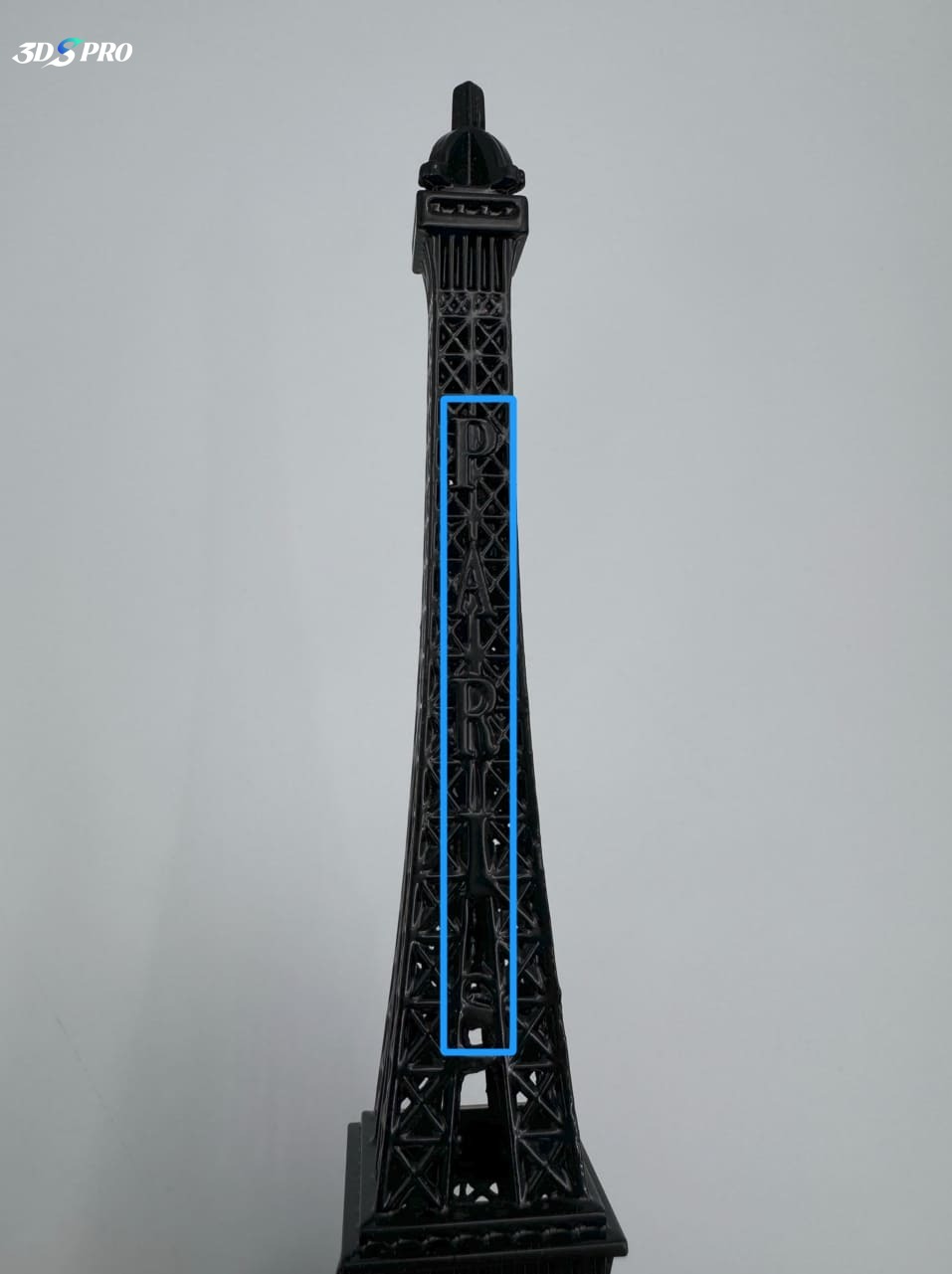
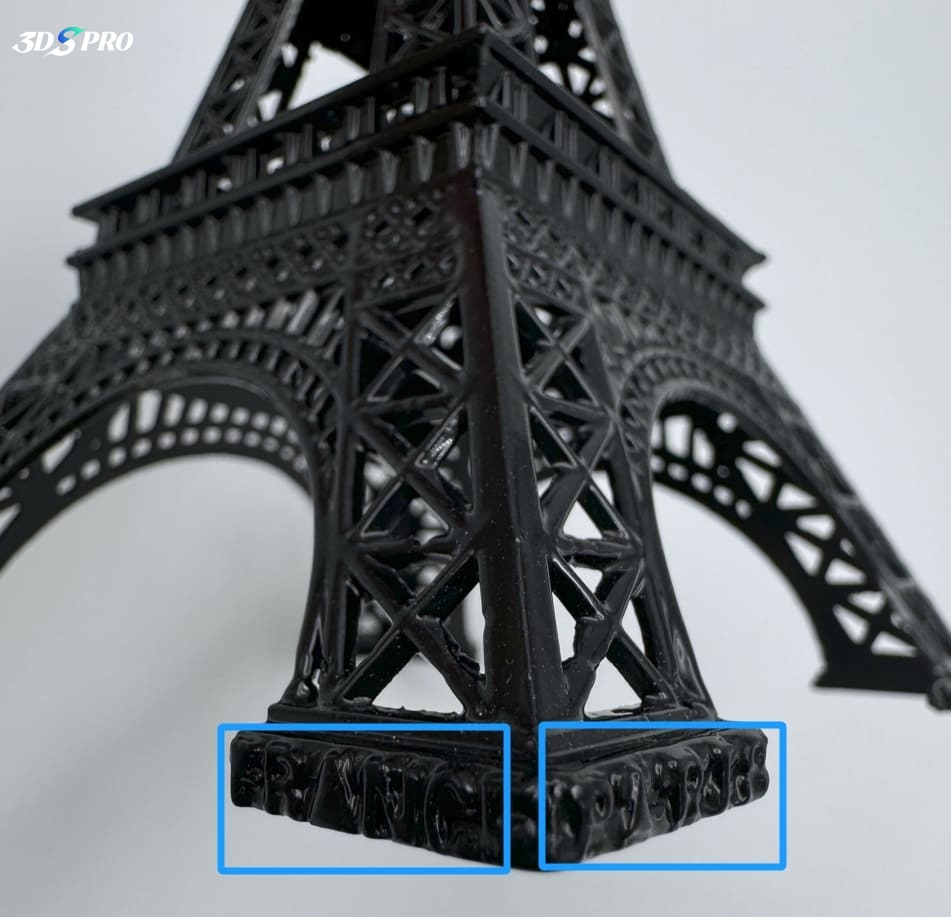
Choosing the appropriate 3D Plus™ method to enhance the surface finish of the Eiffel Tower 3D print was quite challenging as well. Painting would have made it difficult to achieve an even color both on and within the Tower. Therefore, we opted for electroplating. A black replica is unique, as we rarely see Eiffel Tower 3D prints in this color. Black zinc plating proved feasible, resulting in a relatively smooth surface finish.
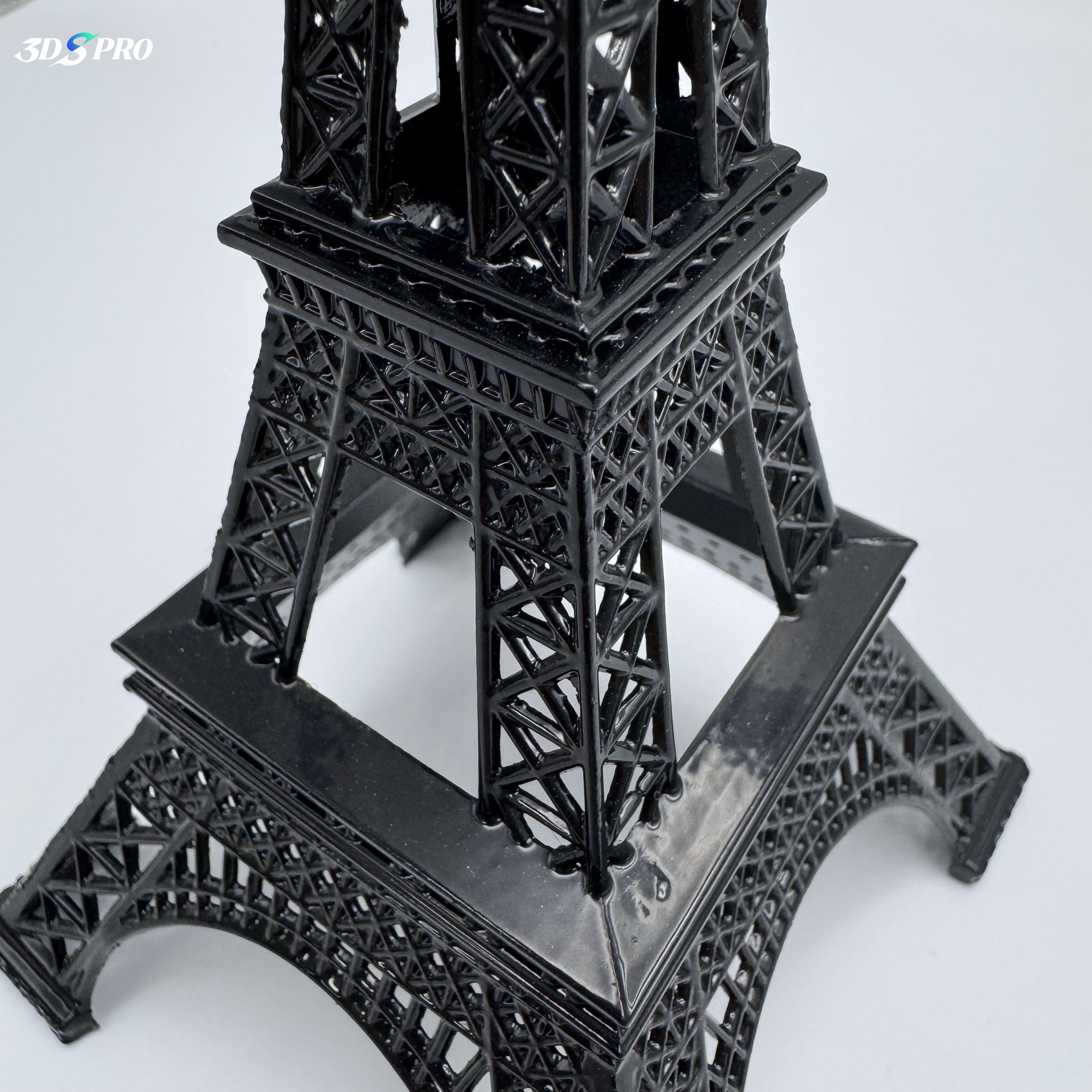
Inevitable Problems (basically due to the small size)
Hard to remove remaining supports completely:
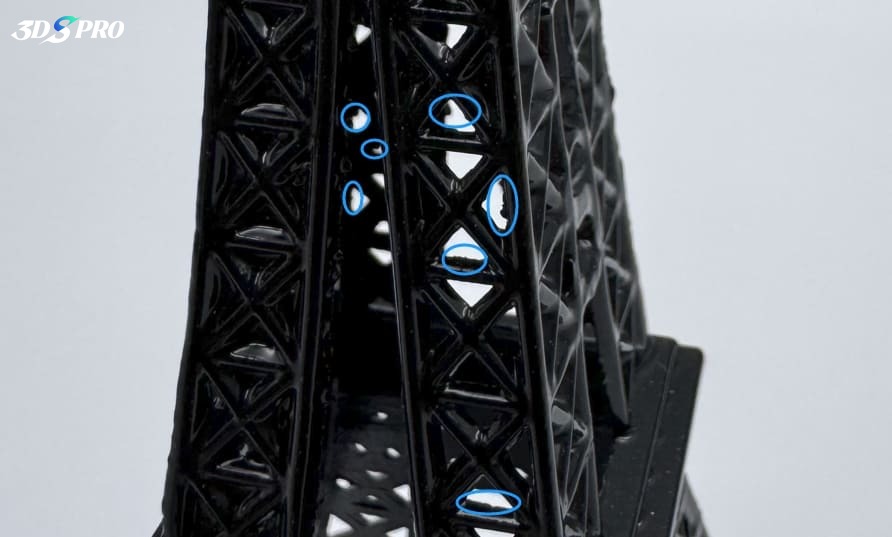
Electroplating can’t save a rough surface without polishing:
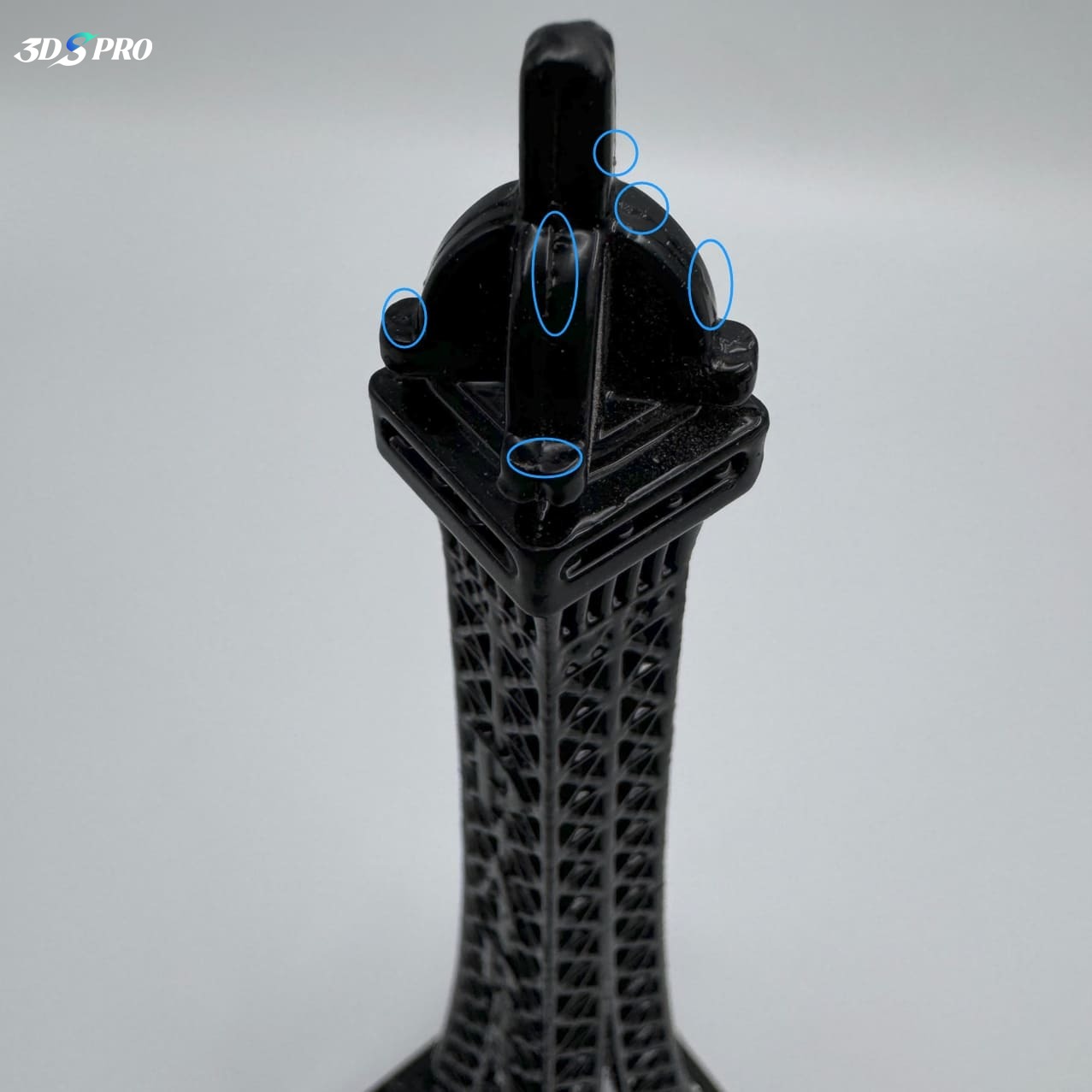
The irregular and missing embossed details:
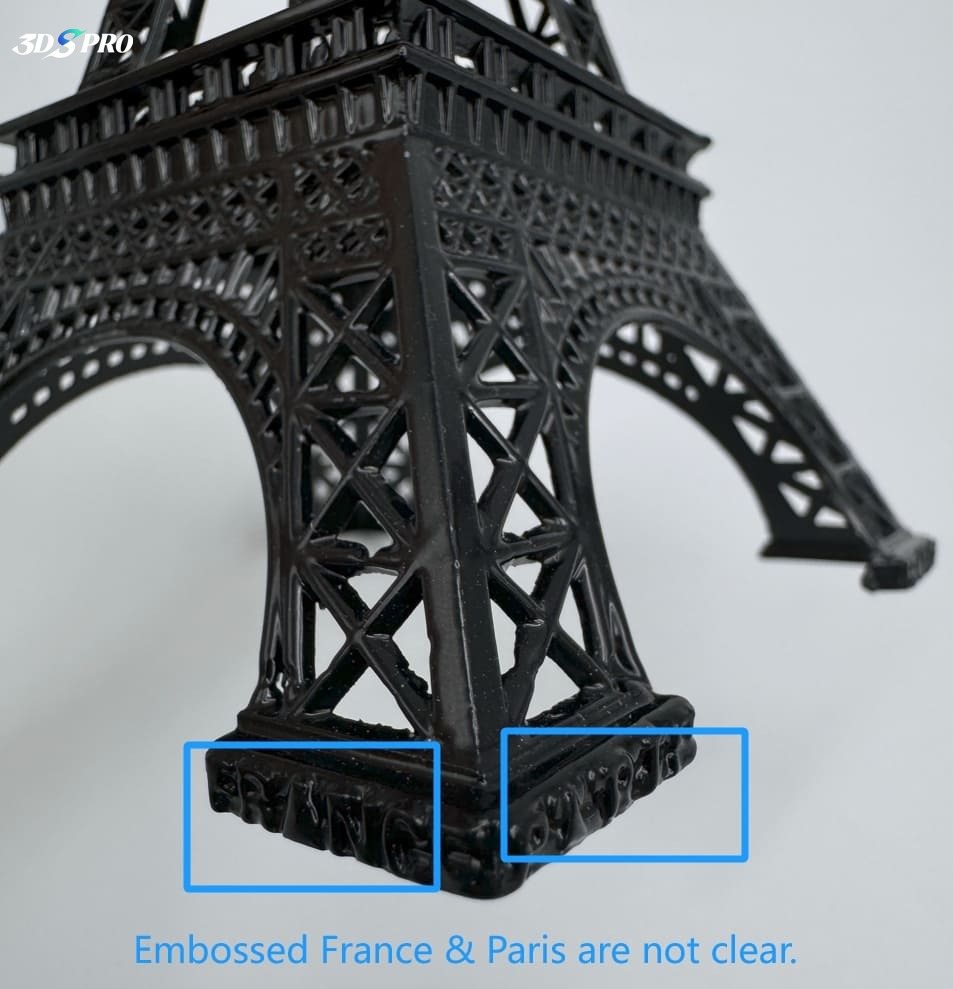
Burres are still existed:
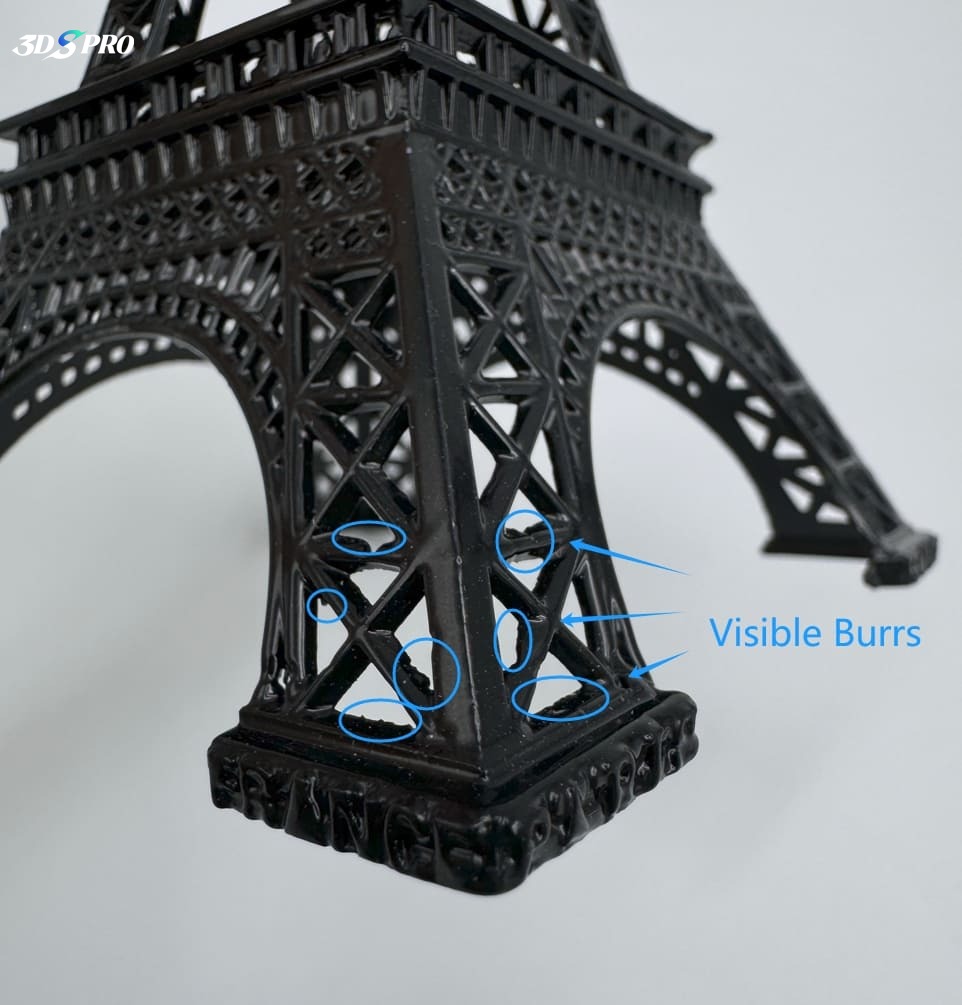
Blemishes are still existed:
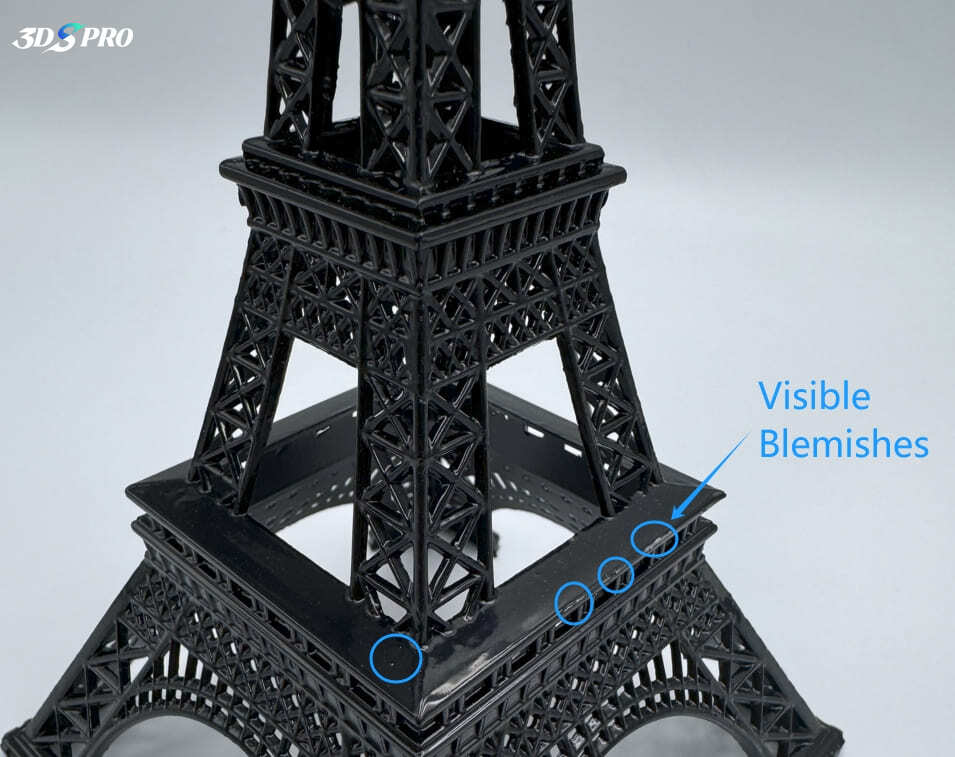
Final Thoughts
Creating a 3D printed replica of the Eiffel Tower for the Paris 2024 Olympics was a tricky project. By leveraging Selective Laser Melting (SLM) with aluminum AlSi10Mg and finishing with black zinc plating, we were able to produce a detailed model. Although there are inevitable challenges, such as support removal and surface defects, we think the key point is that the Eiffel Tower was not scaled to the right size; maybe next time, we will try to use the Scaling function on our Squote to print 3D prints of different sizes to see how much the model size will affect the final result.












